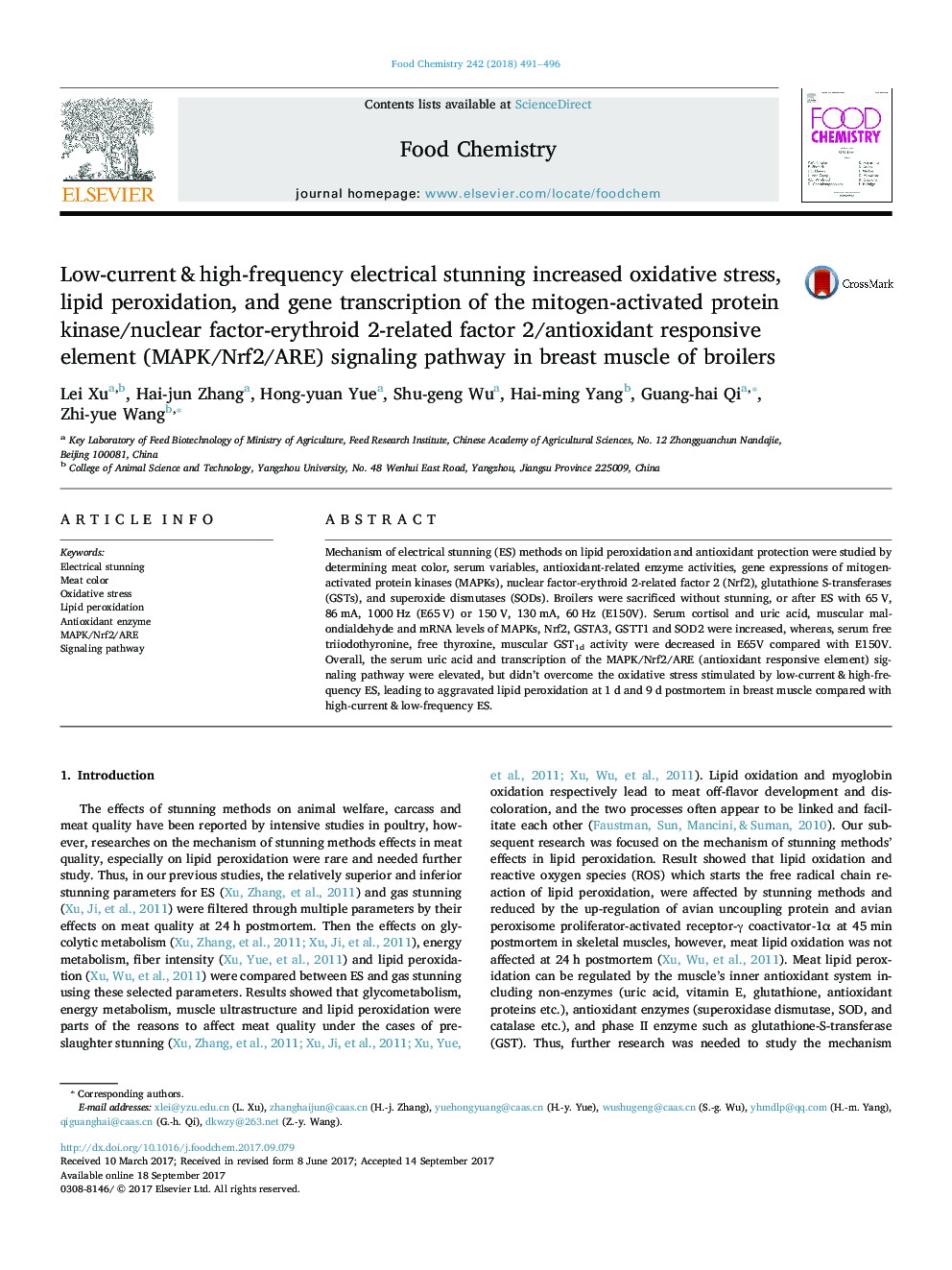| Article ID | Journal | Published Year | Pages | File Type |
|---|---|---|---|---|
| 5132630 | Food Chemistry | 2018 | 6 Pages |
â¢Low-current & high-frequency electrical stunning (ES) increased oxidative stress.â¢Meat lipid peroxidation was increased with low-current & high-frequency ES.â¢Breast meat color was not negatively affected by ES induced lipid peroxidation.â¢MAPK/Nrf2/ARE was transcriptionally activated by low-current & high-frequency ES.â¢Signal transduction from mRNA to enzyme activity was interrupted at postmortem.
Mechanism of electrical stunning (ES) methods on lipid peroxidation and antioxidant protection were studied by determining meat color, serum variables, antioxidant-related enzyme activities, gene expressions of mitogen-activated protein kinases (MAPKs), nuclear factor-erythroid 2-related factor 2 (Nrf2), glutathione S-transferases (GSTs), and superoxide dismutases (SODs). Broilers were sacrificed without stunning, or after ES with 65Â V, 86Â mA, 1000Â Hz (E65Â V) or 150Â V, 130Â mA, 60Â Hz (E150V). Serum cortisol and uric acid, muscular malondialdehyde and mRNA levels of MAPKs, Nrf2, GSTA3, GSTT1 and SOD2 were increased, whereas, serum free triiodothyronine, free thyroxine, muscular GST1d activity were decreased in E65V compared with E150V. Overall, the serum uric acid and transcription of the MAPK/Nrf2/ARE (antioxidant responsive element) signaling pathway were elevated, but didn't overcome the oxidative stress stimulated by low-current & high-frequency ES, leading to aggravated lipid peroxidation at 1Â d and 9Â d postmortem in breast muscle compared with high-current & low-frequency ES.
